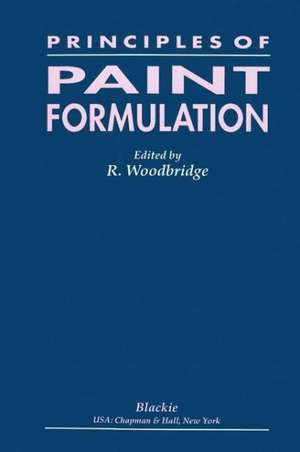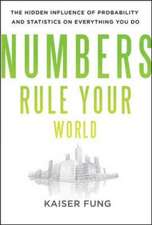Principles of Paint Formulation
Autor R. Woodbridgeen Limba Engleză Paperback – 8 noi 2012
Preț: 470.88 lei
Preț vechi: 553.98 lei
-15% Nou
Puncte Express: 706
Preț estimativ în valută:
90.10€ • 94.31$ • 74.99£
90.10€ • 94.31$ • 74.99£
Carte tipărită la comandă
Livrare economică 31 martie-14 aprilie
Preluare comenzi: 021 569.72.76
Specificații
ISBN-13: 9781461366324
ISBN-10: 1461366321
Pagini: 280
Ilustrații: XII, 265 p.
Dimensiuni: 152 x 229 x 20 mm
Greutate: 0.41 kg
Ediția:Softcover reprint of the original 1st ed. 1991
Editura: Springer Us
Colecția Springer
Locul publicării:New York, NY, United States
ISBN-10: 1461366321
Pagini: 280
Ilustrații: XII, 265 p.
Dimensiuni: 152 x 229 x 20 mm
Greutate: 0.41 kg
Ediția:Softcover reprint of the original 1st ed. 1991
Editura: Springer Us
Colecția Springer
Locul publicării:New York, NY, United States
Public țintă
ResearchCuprins
1 Getting the basics right.- 1.1 Introduction.- 1.2 Availability of raw material data.- 1.3 Clarifying the objective.- 1.4 Identifying formulating constraints.- 1.5 Use of standard formulation format.- 1.6 Use of test schedules.- 1.7 Understanding the costing system.- 1.8 Know the competition.- 2 Establishing a structured development programme.- 2.1 Introduction.- 2.2 Raw material substitution.- 2.3 Cost reduction.- 2.4 Product improvement.- 2.5 Matching the competition.- 2.6 New products.- 2.7 New classes of raw material.- 2.8 New technology.- 3 Raw materials.- 3.1 Introduction.- 3.2 Resins.- 3.3 Pigments.- 3.4 Solvents, thinners and diluents.- 3.5 Rheology modifiers.- 3.6 Additives.- 4 Volume relationships.- 4.1 Introduction.- 4.2 The CPVC concept.- 4.3 Establishing the CPVC.- 4.4 The relationship of PVC to CPVC.- 4.5 The porosity concept.- 4.6 Use in formulation.- 4.7 Summary.- References.- 5 Dry hiding—an alternative to titanium dioxide.- 5.1 Introduction.- 5.2 Available technologies.- 5.3 Relevance of packing considerations.- 5.4 Pittment.- 5.5 Spindrift.- 5.6 Plastic pigment.- 5.7 Opaque polymer.- 6 Computer techniques.- 6.1 Introduction.- 6.2 Computerised process control.- 6.3 Colour matching.- 6.4 Formulation and costing programmes.- 6.5 Experimental designs.- 6.6 Experimental design with mixtures.- 6.7 Theoretical approach to formulation.- References.- 7 Design for bulk manufacture.- 7.1 Introduction.- 7.2 Stages of bulk manufacture.- 7.3 Types of dispersion equipment.- 7.4 Formulating for optimum wetting and dispersion.- 7.5 Choice of equipment.- 8 Selection of test methods.- 8.1 Introduction.- 8.2 Properties in the can.- 8.3 Application characteristics.- 8.4 Film formation under application conditions.- 8.5 Film properties.- Appendices.- Appendix I Paintcalculations.- Appendix II Units for the paint formulator.- Appendix III International test methods.- Appendix IV Health and safety legislation.














